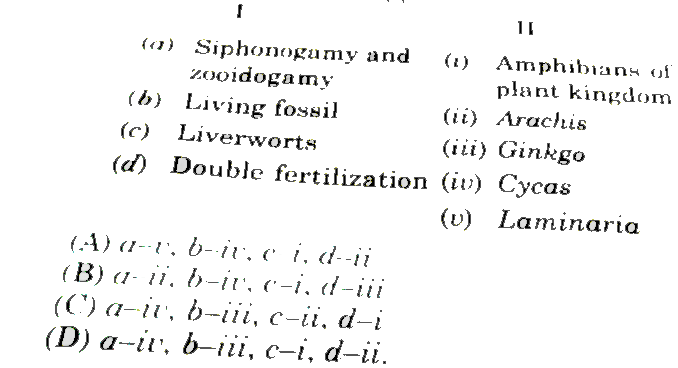Find the correct option related to secondary metabolite
Pigments - Anthocyanins, Carotenoids, Ricin
Lectins – Concanavalin A, Cellulose, Gums
Drugs - Vinblastin, Curcumin
Alkaloids – Morphine, Codeine, Lemon grass oil
To solve the question regarding secondary metabolites, we need to analyze each option provided and determine which ones are correctly classified as secondary metabolites.
1. Identify Secondary Metabolites: Secondary metabolites are organic compounds that are not directly involved in the normal growth, development, or reproduction of an organism. They often have ecological functions, such as defense against herbivores or attracting pollinators.
2. Examine the Options:
- Option 1: Pigments (Anthocyanins, Carotenoids):
- Anthocyanins and carotenoids are indeed secondary metabolites that provide color to plants and help in attracting pollinators.
- However, Ricin is a toxin derived from the castor bean and is not classified as a secondary metabolite.
- Option 2: Lactins (Concanavalin A):
- Concanavalin A is a type of lectin, which is a protein that can bind carbohydrates. While it has biological activity, it is not typically classified as a secondary metabolite.
- Cellulose is a structural polysaccharide and gums are polysaccharides used for thickening or stabilizing. Neither are secondary metabolites.
- Option 3: Drugs (Vinblastine, Curcumin):
- Vinblastine is an anti-cancer drug derived from the periwinkle plant and is a well-known secondary metabolite.
- Curcumin is a compound found in turmeric and is also used for its medicinal properties. Both are correctly classified as secondary metabolites.
- Option 4: Alkaloids (Morphine, Codeine):
- Morphine and codeine are alkaloids, which are nitrogen-containing compounds that often have significant pharmacological effects. They are secondary metabolites.
- Lemongrass oil is an essential oil and while it has various uses, it is not classified as a secondary metabolite in the same context as the others mentioned.
3. Conclusion: After analyzing all options, the only correct classification of secondary metabolites is found in Option 3: Drugs (Vinblastine and Curcumin).
Final Answer:
The correct option related to secondary metabolites is Option 3: Drugs (Vinblastine, Curcumin).
- Option 1: Pigments (Anthocyanins, Carotenoids):
- Anthocyanins and carotenoids are indeed secondary metabolites that provide color to plants and help in attracting pollinators.
- However, Ricin is a toxin derived from the castor bean and is not classified as a secondary metabolite.
- Option 2: Lactins (Concanavalin A):
- Concanavalin A is a type of lectin, which is a protein that can bind carbohydrates. While it has biological activity, it is not typically classified as a secondary metabolite.
- Cellulose is a structural polysaccharide and gums are polysaccharides used for thickening or stabilizing. Neither are secondary metabolites.
- Option 3: Drugs (Vinblastine, Curcumin):
- Vinblastine is an anti-cancer drug derived from the periwinkle plant and is a well-known secondary metabolite.
- Curcumin is a compound found in turmeric and is also used for its medicinal properties. Both are correctly classified as secondary metabolites.
- Option 4: Alkaloids (Morphine, Codeine):
- Morphine and codeine are alkaloids, which are nitrogen-containing compounds that often have significant pharmacological effects. They are secondary metabolites.
- Lemongrass oil is an essential oil and while it has various uses, it is not classified as a secondary metabolite in the same context as the others mentioned.
The correct option related to secondary metabolites is Option 3: Drugs (Vinblastine, Curcumin).
Topper's Solved these Questions
Similar Questions
Find the correct options
View Solutionfind the correct options.
View SolutionMatch find the correct option

View SolutionFind the correct option w.r.t. pteropsida
View SolutionFind the correct option (w.r.t. predation)
View SolutionWhich one is secondary metabolite :-
View SolutionSelect the correct set of secondary metabolites which are alkaloids.
View SolutionHeroin is a white, odourless, bitter crystalline compound which is obtained from the acetylation of a secondary metabolite. This metabolite is extracted from
View SolutionSelect the correct option related to stability of following structures.
View SolutionFind the correct statements related to the living state.
View Solution
